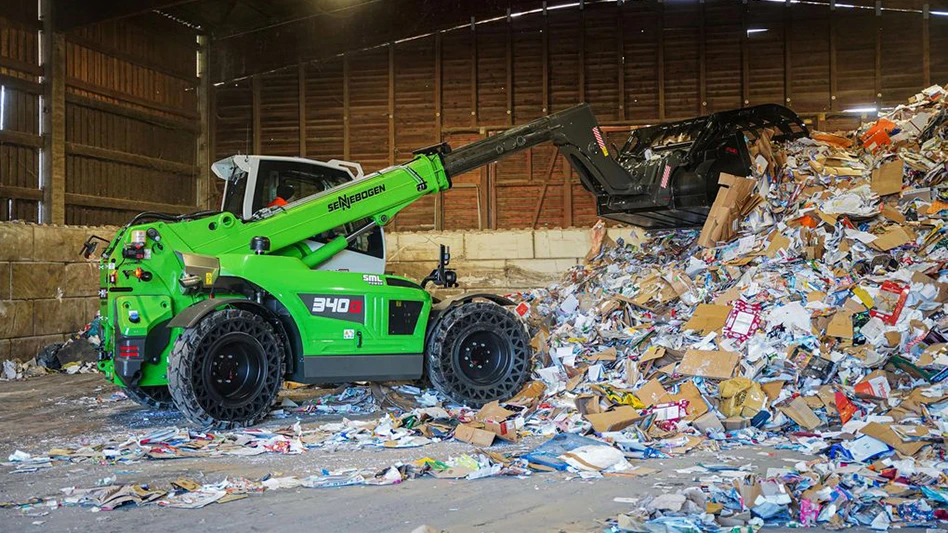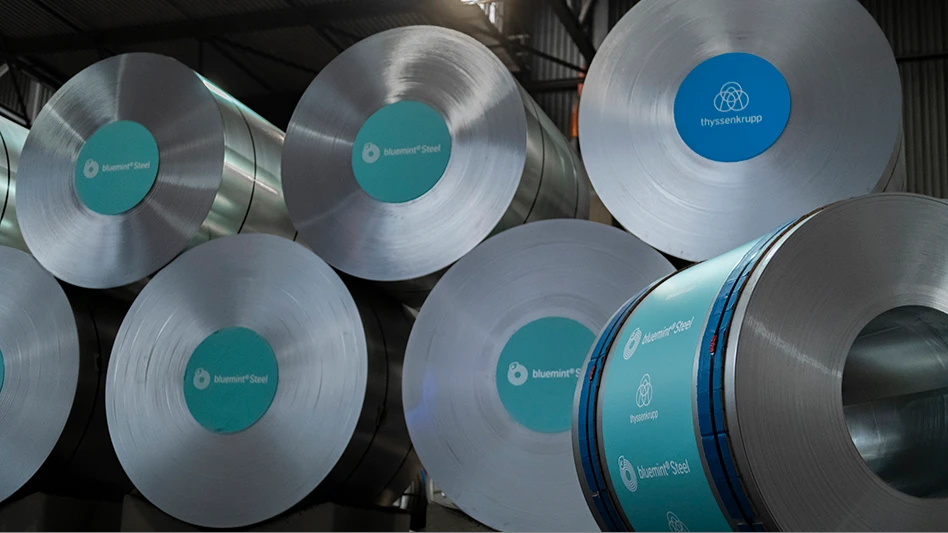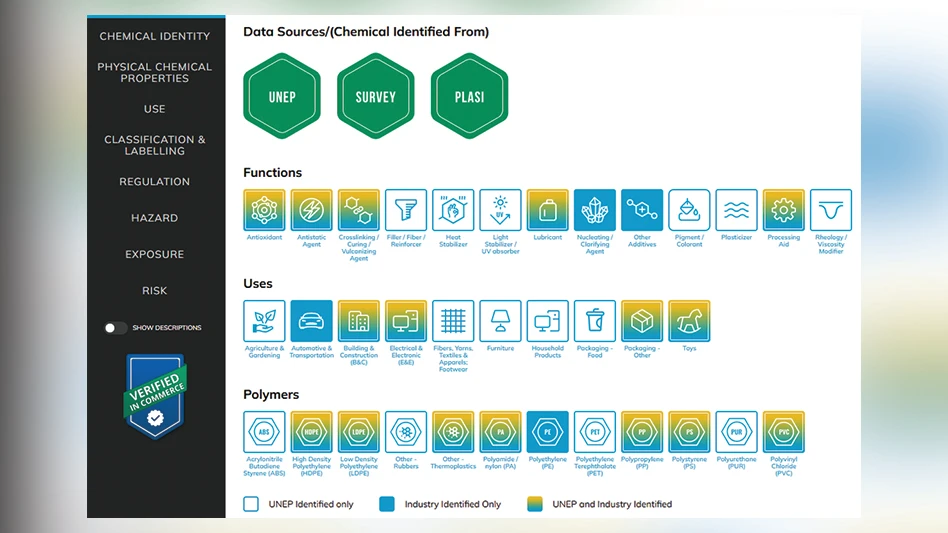 The thorough extraction of nonferrous metals from auto shredder residue (metals recovery) and the further classification (metals sorting) of the zorba and zurik scrap metal specifications have been growing areas of focus for operators of auto shredders in the last decade, as prices of nonferrous metals have climbed to new highs.
The thorough extraction of nonferrous metals from auto shredder residue (metals recovery) and the further classification (metals sorting) of the zorba and zurik scrap metal specifications have been growing areas of focus for operators of auto shredders in the last decade, as prices of nonferrous metals have climbed to new highs.
While pricing has softened recently for many nonferrous metals, some recyclers still see the benefit in investing in nonferrous recovery and sorting technology. Optical technology used in metals recovery and sorting plants can be programmed to perform different sorting tasks in response to market conditions, which can make it attractive to auto shredder operators.
William D. Close, applications engineer at Wendt Corp., Tonawanda, N.Y., advises recyclers to take the current market into consideration when operating optical sorting equipment in metal sorting applications. "It can be equipped with multiple programs for different sorting applications," he says of the equipment. "If stainless is hot, they can switch on stainless steel programs and produce high-grade stainless. If copper is hot, they can sort the copper." He adds, "It's an incremental business decision that is market driven."
However, before recyclers consider upgrading the nonferrous metals in their zorba, they should first focus on recovering all of the metals they can from the shredded materials stream, Close says. "With all of our customers, we're always advocating that they first have to get the metals before they pay attention to the sorting of the metals," he says. "We are counseling them to invest their dollars in a recovery plant until they have achieved a total metal recovery. After they have achieved that, the next focus can become the converting of those metal units into higher values."
Total Metal Recovery
In addition to the magnets, eddy currents and inductive sorters (Wendt supplies a version from the German company Titech GmbH called Finders.) commonly used downstream of an auto shredder, Close says optical systems that work in near-infrared (NIR) wavelengths to separate insulated wire out of the material flow can prove valuable. These optical sorters, which Wendt/Titech calls PolyFinders, are similar to those units used in MRFs (material recovery facilities) to sort plastic bottles and fiber from the residential recyclables stream. "We are applying a higher-resolution version of that same machine to cherry pick the insulated copper wire out of the flow," Close says. "As part of our recovery plant, where we are trying to get all the value out of the stream and in real time convert that to higher-value product, this is the most important tool in the plant."
Heiner Guschall of SiCon GmbH, Hilchenbach, Germany, says near-infrared sorting is commonly used to sort plastics. "The limitation here is that black colored material is difficult to detect or can't be detected."
A camera sorter that uses a charge-coupled device (CCD) can help with this limitation, however. "The CCD camera sorter can differentiate between different colored plastics or metals," Guschall says. "It will also be used, for example, to separate the copper from the aluminum. In addition to this, the CCD camera sensor is also able to detect the shape of pieces, so wires can be separated out of a mixed metal fraction."
Once auto shredder operators have optimized their metal recovery through their shredder downstream systems, they may want to consider a standalone metal sorting plant. These plants, which are an alternative to heavy-media plants, allow recyclers to upgrade the value of the nonferrous metals they have recovered using a dry sensor-sorting process.
Optimal Value
Close describes such plants as the future of the metals sorting business, enabling recyclers to convert mixed nonferrous materials into higher-value products.
 Guschall agrees, adding that interest is growing among recyclers who want to further sort various fractions from the shredded material stream. "We see more and more opportunities when customers want to maximize their revenues by additional sorting steps," he says. "Scrap processors, especially in Europe, are identifying more and more local customers for copper and aluminum and they don't want to export mixed metals to China, Vietnam, India, etc."
Guschall agrees, adding that interest is growing among recyclers who want to further sort various fractions from the shredded material stream. "We see more and more opportunities when customers want to maximize their revenues by additional sorting steps," he says. "Scrap processors, especially in Europe, are identifying more and more local customers for copper and aluminum and they don't want to export mixed metals to China, Vietnam, India, etc."
When it comes to sorting the zorba fraction from the shredder's downstream, Guschall says a typical installation supplied by SiCon would include the separation of aluminum using SiCon X-ray sorters. Copper also would be separated from heavy metals using this technology.
"Another application is the sorting of wire from mixed metal or zurik fractions," Guschall says. "S+S color sorters detect cables based on their different shape. Thus, we detect independent of the color of the cables. The same job could be done with NIR sorters, but then black cables wouldn't be detected."
He continues, "NIR sorters are mainly used in e-scrap applications where customers want to split the plastics fraction into differ grades of plastics."
Close says a typical system from Wendt would include an X-ray transmission (XRT) unit, where heavy metals such as copper, brass, lead, zinc and stainless steel would be separated from the mixed metals flow. XRT units can replace other density-sorting methods and transmit X-ray energy, which is absorbed by metal particles at different rates depending on their atomic density. This generates an image that is captured by the unit's sensor and is the basis for the sort. XRT technology commonly is used to do bulk sorting of the zorba and zurik grades, Close adds.
The heavy metals recovered by the XRT unit would then go on to optical sorters called CombiSenses, which are manufactured by Titech, Close says, and offer a combination of metal and color sorting. "Here we are able to do very high-resolution sorting of the red metals. From the mixed heavy metal fraction, we're able to cherry pick the mixed red metal fraction of copper and yellow brass and further refine it to a dedicated copper and a dedicated yellow brass using the same machines but putting them in series."
Wendt also offers the Titech X-Tract XRF unit. This unit uses X-ray fluorescence to perform a spectroscopic analysis of the materials, Close says. "Now we are able to sort stainless steel into different grades based on the chemistry." This unit also can differentiate between red brass and copper, which have different chemistries, he adds.
"Each one of these machines can be equipped with multiple programs for different sorting applications," Close says, giving operators the flexibility to respond to changing market demands.
The purity of the final products depends on a number of factors, Guschall says, including the input material and throughput rates, the calibration of the sorters and the pre-treatment of the material itself. When it comes to sorting copper from the zorba fraction, he says, "In this case, our color sorters achieve purities of more than 99 percent." He adds, "The material purity may differ from the metallurgical purity since metals often contain alloys which aren't detectable by a color or sensor sorter."
Guschall adds, "In general, the quality and the performance of the machines are continuously improved. This leads to higher throughput as well as to the detection and separation of smaller pieces. SiCon has in its plant S+S color sorters which separate copper from a mixture of aluminum and copper down to a particle size of nearly 1 millimeter."
Technology Investment
Such installations are recommended for recyclers with two or more shredder operations, particularly those running a 98/104 shredder with 4,000 horsepower, Close says. "This is not something that is going to be for everybody. This is going to be for customers who have enough volume to justify an investment—for those that have multiple shredders and are producing products at various locations and shipping to a central plant." Close adds, "There are going to be other operators in specialty markets where this is going to be a niche operation."
Such an installation would provide operators of multiple auto shredders more control over the products their companies are generating, he adds, allowing them to avoid heavy-media plants and the export market.
Guschall says the decision to invest in this type of technology depends on the volume of material to be sorted. "It can start at 200 kilograms (440 pounds) per hour and can go up to some tons of material (shredder light fraction). The customer needs to identify his target fraction and the value of this fraction."
He adds, "Testing equipment is available, and every year hundreds of tests for customers are performed."
Close says it is not unreasonable for Wendt's clients to see a return on their investments in the area of optical sorting in less than one year during strong markets; in weaker markets, it may take two years for an operation to see a payback on its investment.
Companies that are currently operating heavy-media plants also are showing interest in dry separation technology using optical sorting units. "There are some areas where we can augment their systems, making them more efficient," Close says.
Operators of heavy-media plants that are in need of retooling, however, face the choice of whether to keep their wet processes or change to the dry sensor-sorting technology. "It depends on the life cycle of their plants," Close says of this decision. "When they are about to reinvest, that is when the question comes up: What technology will they reinvest with?"
First Things First
As for auto shredder operators, Close reiterates that they should first invest in maximizing nonferrous recovery before investing in further separation.
Wendt recommends installing a nonferrous plant independent of the shredder, which provides recyclers with better control of the process, Close says. "Now we're talking the Finders, the PolyFinders, the sensor-based sorting that would follow the eddy current in the nonferrous recovery plant.
"You want to make sure that you get every pound of recoverable product out of the material destined for the landfill," Close advises.
The author is managing editor of Recycling Today and can be reached at dtoto@gie.net.

Explore the November 2011 Issue
Check out more from this issue and find your next story to read.
Latest from Recycling Today
- Harsco brands slag-content asphalt as SteelPhalt
- ArcelorMittal puts French EAF conversions on hold
- Associations ask for effective EPR to drive textile circularity in Europe
- GESA report claims 72 countries recycled EPS in 2023
- Report: Saica exploring recycled paper mill project in Dayton, Ohio
- Hydro’s Alumetal to meet 15 percent of its energy demands through solar
- CSA Group publishes standard defining plastics recycling in Canada
- Second Cyclyx Circularity Center to be located near Fort Worth, Texas





